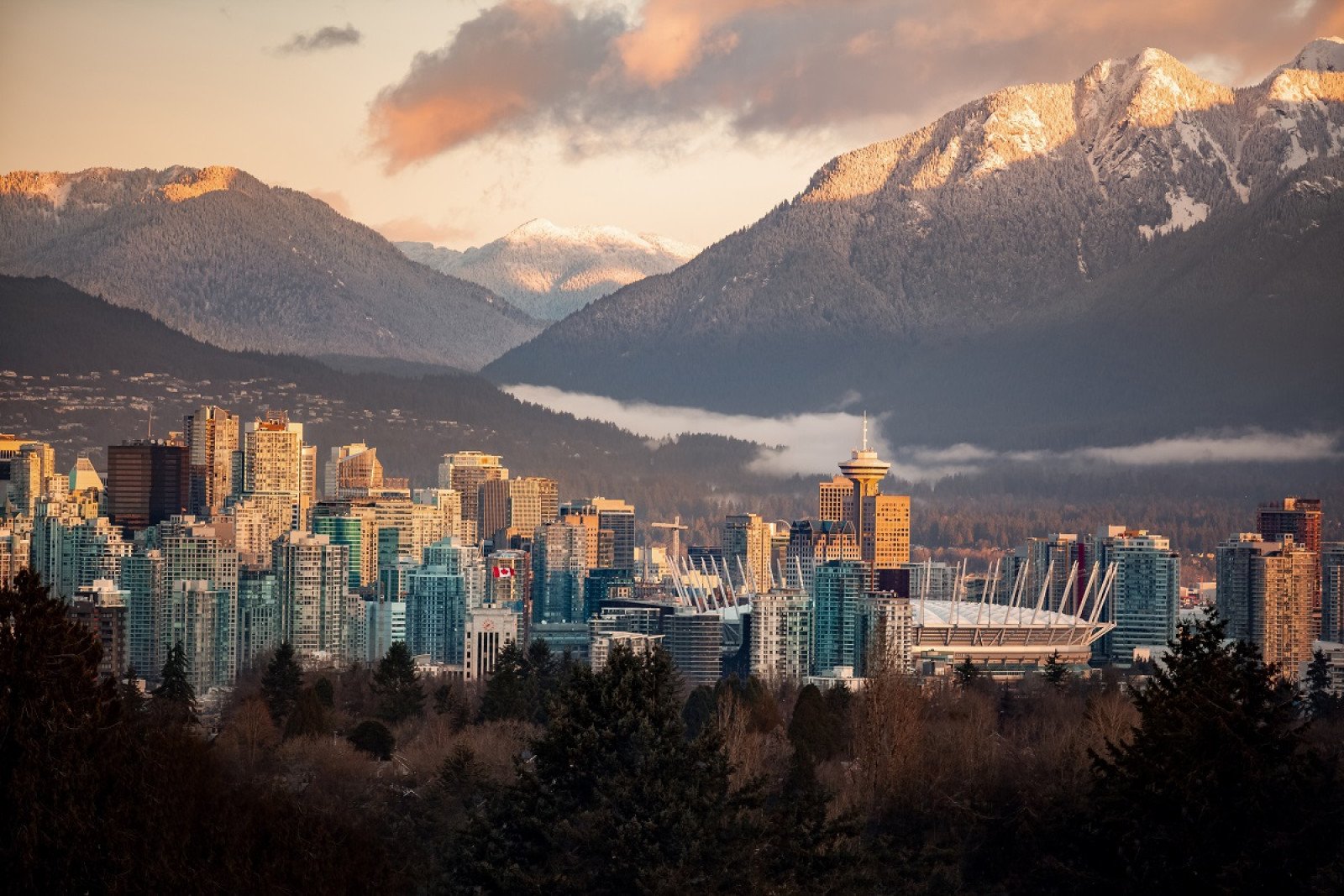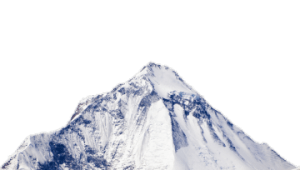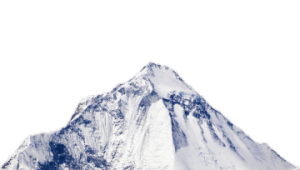Landform power
Play a game and explore different landforms, how humans have adapted them to make electricity, and the importance of water and electricity conservation.

Overview
In this activity, students learn how animals and humans use natural landforms and adapt them to make homes and electricity. They'll play a game to explore different landforms and discover the importance of water and electricity conservation.
Instructions
What you'll need
- TV or computer/projector to share the slideshow
- “Harnessing the power of water” slideshow
- Scrap paper, markers and tape to make game signs.
- Optional: 5 cones if playing outside.
- Do the activity “Water, wind and landforms" and/or discuss what landforms are and how water, ice and wind can change and shape them.
- Discuss what kinds of landforms and waterways we can find around B.C., including mountains, waterfalls, rivers, lakes, beaches, and valleys. Share how animals and people have adapted these natural landforms by showing the pictures in the “Harnessing the power of water” slideshow.
- Slide 2 shows how beavers build dams to create deeper water where they build their homes.
- Slide 3 shows a wheel placed in a river. As the river flows, it turns a wheel which grinds grain into flour.
- Slide 4 shows how we create electricity in B.C. to power our lights. We dam a river by building a wall to form a lake (like a beaver builds a dam), and the water falling through the dam turns a wheel and creates electricity. Hydroelectricity is clean, renewable energy which is good. Some electricity in the world is made from burning coal which creates pollution and affects the climate.
- Since we use water to make electricity, ask students what might happen if there isn’t enough water. We might run out of electricity and then might have to buy coal electricity which is not good. We need to save water, so we have enough to make electricity, to drink and brush our teeth, and leave enough for the fish and animals. Consider actions to conserve water and electricity like taking short showers, turning off the tap, powering down electronics, and turning off lights.
- Explain to students they will be playing a game to see how different landforms affect people, animals and water.
- In an outdoor space or a gym, designate one area for each of these landforms: glacier, ocean, river, waterfall, beach. Label each area so the landform is easily visible.
- These labels may be taped to the wall, if indoors, or placed on the ground or taped to an orange cone, if outdoors.
- Each area should be far enough away from the other areas that if all students were to be in one of the areas, they won’t spill over into another area.
- Designate a starting area, which could be in the middle or off to one side.
- Tell students that you will call out a question, and they must run to the area that they think is the correct answer. Tell them that there may be more than one answer for some questions, so they might not all go to the same place.
- Ask the following questions, waiting after each for students to choose their answers and run to their chosen location. Then reveal the answer, discussing if students chose different answers.
- Which landform makes water run downhill? (Answer: mountain or waterfall)
- Which landform do salmon swim in? (Answer: river or ocean)
- Which landform can we dam to make electricity? (Answer: river)
- Which landform is created over thousands of years, by waves and tides? (Answer: beach or mountain)
- Which landform can get wider and deeper because of erosion? (Answer: river)
- Which landform moves but really, really slowly? (Answer: glacier and mountains)
- Which landform can get bigger during rainy seasons and shrink or even disappear during dry seasons? (Answer: river or waterfall)
- Which landform covers most of the Earth’s surface? (Answer: ocean)
- Which landforms can create canyons? (Answer: glacier, river)
- Which landforms can move rocks to new locations? (Answer: glacier, ocean, river, waterfalls)
- Which landforms are fresh water and drinkable? (Answer: glacier, river, waterfall)
- Saving electricity and water helps to stop which landform from running dry? (Answer: river, waterfall)
- After playing the game, review with students the different landforms we have in B.C. and how that means we have access to clean water and clean electricity. Remind students to take care of our environment by conserving both water and electricity.
Modify or extend this activity
- Extend the learning by doing the activity "Staying warm: memory game" to learn how to keep warm without wasting electricity.
- Explore other activities on conservation.
Curriculum Fit
Science 3
Big idea
- Wind, water, and ice change the shape of the land
- Sample questions to support inquiry with students: How is the shape of the land changed by environmental factors? What are landforms? What landforms do you have in your local area?
Content
- Major local landforms
- Observable changes in the local environment caused by erosion and deposition by wind, water and ice
Curricular competencies
Questioning and predicting
- Demonstrate curiosity about the natural world
- Make predictions based on prior knowledge
Processing and analyzing data and information
- Experience and interpret the local environment
Social Studies 3
Content
- Relationship between humans and their environment
Curricular competencies
- Recognize the causes and consequences of events, decisions, or developments (cause and consequence)
Physical and Health Education 3
Big idea
- Daily participation in physical activity at moderate to vigorous intensity levels benefits all aspects of our well-being
Assessments
- Assess students’ understanding of how B.C. has landforms with lots of mountains and rivers, which means we can make clean electricity from water.
- Assess students’ ability to cooperate and participate in the game.
- Assess students’ understanding of how important it is to conserve water and energy and protect B.C.
Teaching Notes
Landforms in B.C.
B.C. is a beautiful province, made of many landforms including rocky coastlines, sandy beaches, forests, lakes, mountains, inland deserts, and grassy plains. For more information on B.C. go to WelcomeBC.
Changing landforms
Landforms are always changing. Sometimes this happens slowly over millions of years, and sometimes it happens rapidly. Landforms are shaped and continuously changed by water, wind, and ice. The process is through:
- Erosion: Earth materials being worn away or moved by natural processes like water, wind, and ice.
- Weathering: Static breaking down or dissolving of minerals.
- Deposition: Rocks and soil are moved and arrive in new places
For more information on erosion and weathering check out National Geographic: erosion and weathering.
Glaciers
Glaciers move downhill and outward under the weight of gravity. The movement is comparable to the movement of a river, but much slower. Glaciers can form on tops of mountains or in valleys. Constant thawing and refreezing causes fractures in bedrock and can deposit rocks far from their original location.
Watch this video to learn how glaciers move slowly.
Water wheels and clean, renewable electricity
Water wheels have been traced back in history to ancient Romans, to power machinery for grinding flour. The earliest turbines were invented and used in the early 19th century, and the world’s first hydroelectric power project was in England in 1878. They began to be used in North America in the 1880s. Currently more than 90% of B.C.’s electricity is generated with water. Dams are built across a river, creating large reservoirs or potential energy. As the water flows down through the dam and down pipes known as penstocks, its kinetic energy is used to turn a turbine. The generator converts the turbine's mechanical energy into electricity. This electric energy then goes through various transmission processes before it reaches our homes and business. This electricity is both clean and renewable.
For more information check out:
Conservation
Water and electricity are closely connected here in B.C. We know that with climate change, water levels can vary, including having too much water at times, such as during the floods in Fall 2021, and having longer droughts, such as in Fall 2022. Thus, water conservation is getting more and more important. Some dams, such as the Coquitlam watershed dam, are used both for potable water and to divert water to Buntzen lake for generating electricity, so conserving water also means that we have enough water to make electricity.
Water and energy conservation tips:
- Take short showers, ideally 5 minutes or less. Many showers use 10L per minute.
- Let the lawn go brown. Water use goes up in the summer, but that’s when we have less precipitation.
- Water gardens in the early morning or evening, to reduce evaporation.
- Turn off the tap when you’re done, and when brushing your teeth and washing your hands.
- Get a low-flow showerhead, low-flow toilet, aerators for your taps, to reduce water use.
- Wash laundry in cold water, and only wash clothes when they are dirty.
- Unplug electronics which can draw phantom power from the grid even when turned off.







